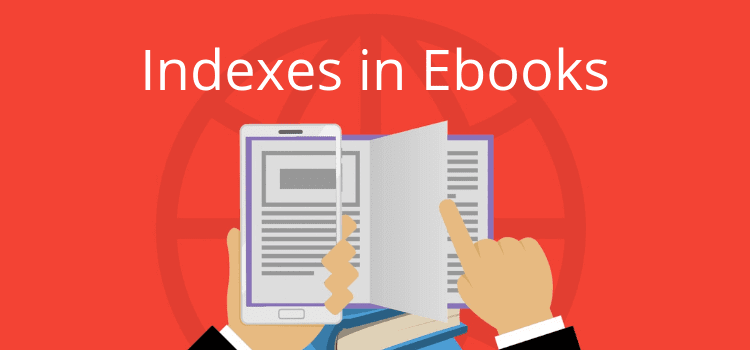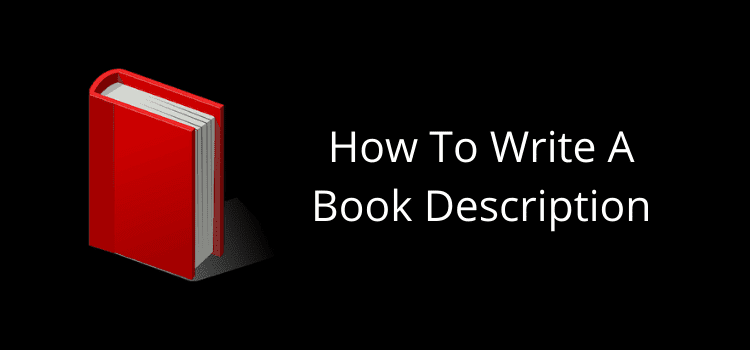
Like me, you’ve probably wondered about the possible uses of AI for writers. At the same time, there’s always the nagging concern that AI poses a threat.
However, as I’ve discovered, once you get over the fear factor, AI can offer a lot of advantages. I use it more and more now, but it hasn’t changed my writing routines or workflow.
What it has done is make parts of my process quicker and easier. But here’s the big bonus: it also saves me money on premium subscription tools.
However, if you’re still anxious about using AI in writing, it’s perfectly normal.
Overcoming the fear factor of AI
It’s not unusual to feel somewhat wary about using AI to assist your writing. At first, I was extremely cautious.
You might hold fears that it will replace your creativity, make your writing voice sound robotic, or even lead to errors or mistakes.
Your concerns are well-placed. If you jump in head first and use AI to write for you, it will be robotic and probably include hallucinated errors or incorrect facts.
However, that’s definitely not the way to use AI for writers.
The advantages of AI come from using it intelligently to help you with routine tasks.
If it’s all new to you, you don’t need to rush in and try everything.
You can try free AI tools like ChatGPT, Google Gemini, or Bing Copilot to experiment with performing simple tasks.
These might include brainstorming writing ideas, creating outlines, checking grammar, or analyzing SEO opportunities.
Best of all, there’s no commitment. You can use these AI assistants for free.
That’s how I started and slowly discovered how I could use AI tools to my advantage.
20 Productive uses of AI for writers
While my list of uses and tasks is from my own needs, I’m pretty sure they cover areas that most writers would use.
However, I must point out that I’m not recommending any specific tools, such as AI writing software.
All of the tasks in my list are possible with any free AI assistant or tool.
I’ve tried many of them, and the results from most are very similar.
However, the ones I use most frequently now are ChatGPT, Google Gemini, Bing Copilot, and occasionally, Perplexity.
You might find other free tools you prefer, but most will perform these tasks quite well.
So, what are the most valuable uses of AI for writers?
1. Brainstorming ideas
Without a doubt, this is the biggest time-saver for me. In the past, I would scour search engines, blogs, forums, or social media, hunting for new writing topics.
It usually took hours to find something worthwhile.
But now, all it takes is a simple prompt to find new ideas.
For example: “I’m looking for topic ideas related to formatting ebooks.” Or: “Can you help me with a short story idea about a dog with magical powers?”
In seconds, you can get a list of ideas to choose from. And if none takes your fancy, ask again. “Can you give me more ideas?”
Performing this task alone has saved me hours and hours of research. These are the extra hours I can now use to write.
2. Finding quotes and sources
One of the most practical uses of AI for writers is streamlining research.
Because I write about writing, I often need to find quotations or examples from literature.
Sure, Google Books is a great resource, but AI is much faster.
However, I always ask for a link or citation in my prompts because, as we all know, AI can get things wrong.
I’ve learned not to trust every response. Sometimes it has given me quotes by Shakespeare that were not true.
But most times, a link can confirm the accuracy.
Usually, though, I look for a second or third way to confirm. Sometimes with another AI tool, with a search engine, or back to Google Books.
3. Grammar and writing checks
I’ve used and tested a lot of grammar and writing checkers, both free and paid.
Until recently, I was paying an annual subscription for one, but no more. Most writing checkers use AI now, so why not go to the source?
All you need to do is ask for a grammar and writing style check, then paste in your text.
However, I’m pedantic about grammar and spelling, so I still use a couple of free checkers as well.
Just yesterday, it was only ChatGPT that caught an embarrassing that/than error for me.
For sure, tools like Grammarly, Prowritingaid, and LanguageTool are all very helpful, but they can make mistakes. So I seem be relying more and more on AI to check my writing.
4. Headline and title ideas
If you are writing articles for your blog, this is a way to save time.
Simply provide your topic idea, and ask for headline or title ideas or options.
You can keep asking for more, or fine-tune your prompt to get a long list of ideas.
5. SEO keyword suggestions
Similar to my last item, this is a task for bloggers and article writers.
With AI, it can help you discover relevant SEO keywords for your topic, taking a lot of the guesswork out of choosing focus and secondary keywords.
Until AI, I needed to pay for a tool to do this, so it’s another money-saving benefit for me.
6. Expanding outlines
All you need to do here is give a rough outline, say, five or six points, and let AI fill in the details.
You can use this for articles or even for chapter plans.
Just ask it to create a draft for each point. You are not going to use the text, but it is helpful in giving you a map to follow.
If you’re stuck with a temporary case of writer’s block, it’s a guaranteed and instant cure.
7. Summarizing text
Going the other way, AI can condense a text into a summary.
It’s useful for long texts such as research papers, book chapters, or lengthy articles.
With this quick task, you can save hours of reading, but it still helps you understand the key points.
8. Generating meta descriptions
Here’s another practical SEO use for bloggers and site owners.
AI can produce SEO-friendly meta descriptions for blog posts and articles in seconds.
It simplifies a task that can be tricky and time-consuming, especially for new writers.
The benefit is improving search visibility without needing separate SEO tools. It’s a fast way to optimize content for readers and search engines.
9. Exploring “what if” scenarios
AI can help you test plot twists, endings, or narrative paths in fiction.
It’s a bit like using it as a sounding board to get feedback about your ideas.
You’re still in control of your story, but this task can help you avoid many rewrites.
10. Book descriptions and author bios
Writing a book description always seems to be an onerous task for authors.
While you don’t want to let AI write it for you, asking for a variety of drafts can help you write a better description for your book.
You can even create multiple versions to use on different self-publishing platforms or book retailers.
Probably more than book descriptions, author bios are always challenging.
If you are a new author, AI can help you come up with lots of ideas and angles.
It won’t write it for you, but you can use the drafts for inspiration.
11. Basic coding
It might not be among the many uses of AI for writers, but for some, this is useful.
I’m certainly not an experienced coder.
However, with AI’s help, I have created plugins and code for WordPress without too much effort.
It’s another way to cut costs, as I now rarely have to hire a developer.
12. Fact-checking support
It’s ironic, but the best way to check that an AI tool is not hallucinating and giving you incorrect facts is to use another one.
If you want to verify dates, names, events, or other factual details, I always double or triple-check.
The last thing you want is factual errors in your writing, especially for nonfiction authors or article writers.
Until I can be sure, I keep digging. But it’s still a lot faster than most other ways of fact-checking.
13. Analyzing tables and data
You can upload CSV tables or other data and ask AI to do an analysis for you.
I use this regularly to help manage nearly 1,000 articles on my site. I can ask for the best-performing pages related to a specific topic, or for pages that could be spun off into new topics.
The only word of warning is that this is a resource-hungry task. So, you might find that free tools limit your use of analysis. But most allow you enough to use it at least once a day.
14. Creating lists or tables
In reverse, AI can help you organize research data, references, or resources into lists or tables.
I don’t use this a lot, but it has come in handy from time to time, such as for creating tables to turn into charts.
15. Rewriting sentences
Sometimes, your words simply don’t sound right. Maybe a sentence is too long and complex, or short ones could be combined better.
You might want an important point moved closer to the start, or you need a specific phrase to be included.
All of these are easy for AI to do. Is it cheating? Well, perhaps a wee bit, but it’s a big time-saver.
16. Improving readability
I never like to oversimplify my writing, but occasionally, I get the feeling that a text might be a little difficult to read.
I don’t take on all the recommendations. But it often gives me some hints I can use.
Even if you are happy with a text, it’s still a handy check to improve readability.
17. Language translation
Like you, perhaps, I don’t use this very often in my writing.
However, I’m living in a francophone country, and my French can always do with some help.
As I’ve discovered with confirmation from my French-speaking wife, ChatGPT in particular does an excellent job of translating, even for complex texts.
It’s also handy for authors who want to use foreign phrases in a novel.
18. Does this work?
It’s a bit like having a virtual editor.
For any part of your writing, you can just ask for feedback. Paste your text and ask, “Does this work?”
I use this frequently to check if I have covered every point. Another use is for checking keyword density in articles.
Is it looking for reassurance? Yes, perhaps.
19. I’ve got this far
I’m sure you know the feeling. You get close to finishing a text, story, or even a poem, but the muse abandons you at the last minute.
In this case, copy what you have, paste it, and ask AI to give you a helping hand to finish it.
You won’t use what it suggests word for word, but it will give you ideas to get you moving again.
20. Image creation
Okay, I hear you. A lot of people are circumspect about AI-generated images.
However, I rarely have anything around me that I can photograph that is relevant to my writing.
Stock images can sometimes do the job, as can screenshots. But both often lack visual appeal.
I’ve moved slowly toward using AI images. They are free, easy to create, and can capture exactly what I want my readers to visualize.
However, I’m treading carefully and clearly marking any AI image I might use.
Exploring more uses of AI for writers
I could easily have made my list twice as long with many more practical tasks and uses.
However, AI is an evolving technology. Almost every week, I seem to find another handy or useful way it can help my writing process or improve how writers can use AI.
But instead of boring you with a long list of every possible use, I’ve focused on the most practical ones I use, and that might work for you, as well.
Even if you only try a few, you should find out how using AI can save you time and make your writing process a little more productive.
When you become comfortable with it, you can always explore more advanced tasks.
Do I have a favorite AI tool?
No, because they all have pros and cons.
I use ChatGPT a lot for content analysis because it has a friendly, chatty persona about it.
It even knows that when I say, “it’s beer o’clock,” it’s time for me to stop work for the day, and stops giving me any more suggestions.
It wishes me a pleasant evening and says it will be ready for me in the morning. Or even responds to silly things I say. Like this:

Gemini is far less chatty and much more matter-of-fact.
But it also seems to me that its information is more accurate and less prone to hallucination. It’s the one I turn to when I’m chasing accurate facts, quotes, and citations.
Bing Copilot is based on ChatGPT, but it doesn’t feel quite the same to me. I don’t use it a lot, but its image generation seems to be better for my needs.
Perplexity is more like a search engine on steroids. What I like about it is that I can ask follow-up questions to narrow down to the information I’m looking for.
No matter what AI tool you choose to use (even paid tools), there will always be pluses and minuses.
That’s why I prefer to use a handful of tools, so I can cover most bases, and as accurately as possible.
Conclusion
As my list hopefully shows you, the uses of AI for writers are many. Most of them are practical, time-saving, and easy to include in your workflow.
If it’s all new to you, take it slowly and try one or two tasks. It takes a little while to get used to communicating with AI because it is truly conversational.
For some, that might feel a bit strange at first. One of the things I’ve learned is that, for some reason, AI assistants seem to react better if you are polite.
I might be wrong about that, but well, it never hurts to be polite, does it?
As for the fears writers still have about AI, yes, I understand. But progress is progress.
New technology always comes with anxiety. But writers have always adapted, even if it takes a while.
Related Reading: Article Writing In The New AI Search World
Share This Article


